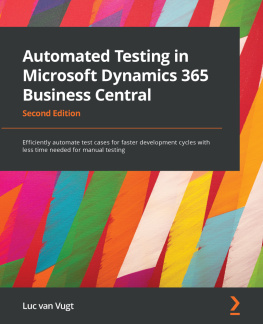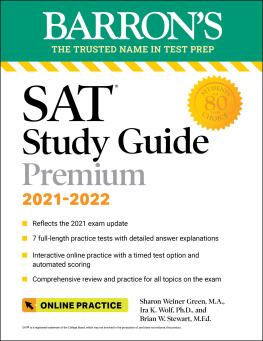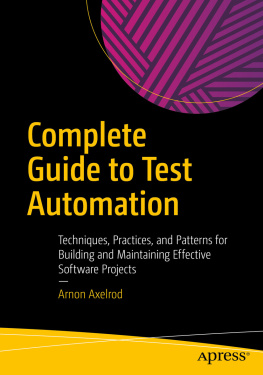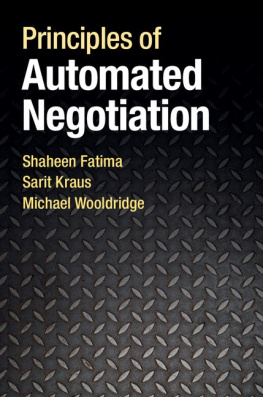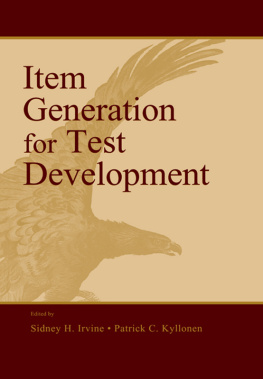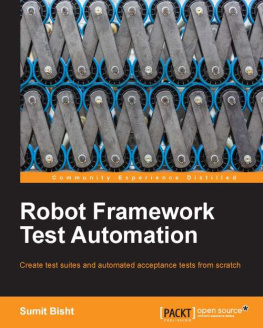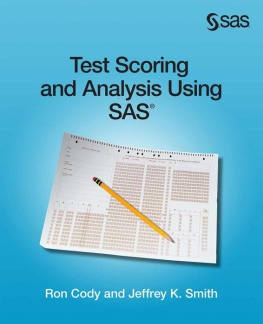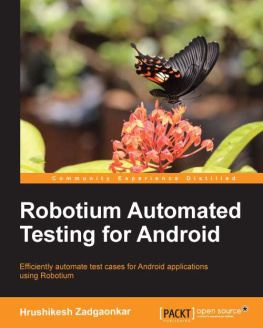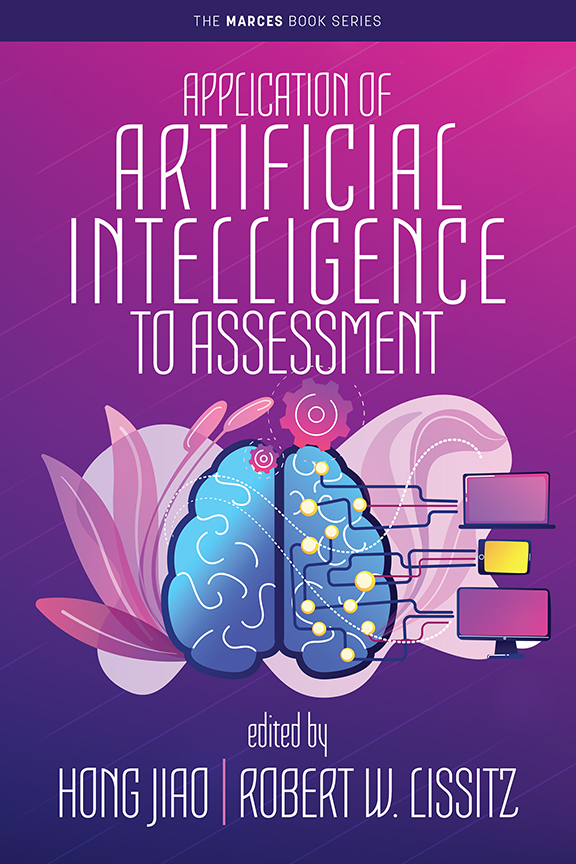______________________________________
Application of Artificial Intelligence to Assessment
______
A volume in
The MARCES Book Series
Hong Jiao, and Robert W. Lissitz, Series Editors
__________________________________________
Application of Artificial Intelligence to Assessment
______
edited by
Hong Jiao
University of Maryland
Robert W. Lissitz
University of Maryland
INFORMATION AGE PUBLISHING, INC.
Charlotte, NC www.infoagepub.com
Library of Congress Cataloging-in-Publication Data
A CIP record for this book is available from the Library of Congress
http://www.loc.gov
ISBN: 978-1-64113-951-9 (Paperback)
978-1-64113-952-6 (Hardcover)
978-1-64113-953-3 (E-Book)
Copyright 2020 Information Age Publishing Inc.
All rights reserved. No part of this publication may be reproduced, stored in a
retrieval system, or transmitted, in any form or by any means, electronic, mechanical,
photocopying, microfilming, recording or otherwise, without written permission
from the publisher.
Printed in the United States of America
Chapter 1
Augmented Intelligence and the Future of Item Development
Mark J. Gierl
University of Alberta
Hollis Lai
University of Alberta
Donna Matovinovic
ACT Inc.
Testing organizations require large numbers of diverse, high-quality, content-specific items to support their current test delivery and test design initiatives. But the demand for test items far exceeds the supply. Conventional item development is a manual process that is both time consuming and expensive because each item is written individually by a subject-matter expert (SME) and then reviewed, edited, and revised by groups of SMEs to ensure every item meets quality control standards. As a result, item development serves as a critical bottleneck in our current approach to content development for testing. One way to address this problem is to augment the conventional approach with computer algorithms to improve the efficiency and increase the scalability of the item development process. Automatic item generation (AIG) is the process of using models to produce items using computer technology. With AIG a single model can be used to produce hundreds of new test items. The purpose of our chapter is to describe and illustrate how augmented intelligence in item development can be achieved with the use of AIG. The chapter contains three sections. In the first section, we describe the conventional approach to item development. We also explain why this approach cannot be used to meet the growing demand for new test items. In the second section, we introduce augmented intelligence in item development and we describe how AIG can be used to support the human-machine interactions needed for efficient and scalable content production. In the third section, we provide a summary and we highlight directions for future research.
Contemporary Item Development and the Problem of Scalability
The conventional approach to item development is a manual process where SMEs use their experiences and expertise to produce new test items. It relies on a method where the SME creates each test item individually. Then, after each item is created, it is edited, reviewed, and revised until the item meets the required standards of quality (Haladyna & Rodriguez, 2013; Lane, Raymond, Haladyna, & Downing, 2016; Schmeiser & Welch, 2006). The SME is responsible for the entire process which involves identifying, organizing, and evaluating the content required for creating new items. This approach relies on human judgment acquired through training and experience. As a result, item development has often been described as an art because it depends on the knowledge, experience, and insight of the SME (Haladyna & Rodriguez, 2013; Schmeiser & Welch, 2006). Conventional item development is also a standardized process that requires iterative refinements to address quality control (Lane, Raymond, Haladyna, & Downing, 2016; Schmeiser & Welch, 2006). The item development process is standardized through the use of guidelines where SMEs are provided with information to structure their task in a consistent manner that produces reliable and valid test items (Haladyna & Downing, 1998; Haladayna, Dowing, & Rodriguez, 2002; Haladyna & Rodriguez, 2013). Standardization helps control for the potentially diverse outcomes that can be produced when different SMEs perform the same item development task. Guidelines provide a summary of best practices, common mistakes, and general expectations that help ensure the SMEs have a shared understanding of their tasks and responsibilities. Iterative refinement supports the practice of item development through the use of a structured and systematic item review. That is, once an item has been written, it is then reviewed to evaluate whether it has met important outcomes described in the guidelines. Typically, reviews are conducted by committees of SMEs. Reviews can focus on a range of standards and objectives related to item content (e.g., does the item match the test specifications), fairness (e.g., does the item illicit construct-irrelevant variance due to subgroup differences), cognitive complexity (e.g., is the linguistic complexity of the item aligned to grade-level expectations), and presentation (e.g., is the item grammatically correct; Perie & Huff, 2016; Schmeiser & Welch, 2006). The review yields feedback on different standards of item quality that, in turn, can be used by the SME to revise and improve the original item.
The conventional approach has two noteworthy limitations. First, conventional item development is inefficient. It is both time consuming and expensive because it relies on the item as the unit of analysis (Drasgow, Luecht, & Bennett, 2006). That is, each item in the process is unique and therefore each item must be individually written, edited, reviewed, and revised. Many different components of item quality can be identified. For example, item quality can be determined, as noted in the previous paragraph, by the item content, fairness, cognitive complexity, and presentation. Because each item is unique, each component of item quality must be reviewed and, if necessary, each item must be revised. Because writing and reviewing is conducted by highly-qualified SMEs, the conventional approach is expensive.
Second, conventional item development is challenging to scale in an economical way. The scalability of the conventional approach is again linked to the item as the unit of analysis. When one item is required, one item is written and reviewed by the SME. When 100 items are required, 100 items must be written and reviewed by the SMEs. Hence, a large number of SMEs who can write and review items is needed to scale the process. Conventional item development can result in an increase in item production when large numbers of SMEs are available. But item writing and reviewing is a time-consuming and expensive process due to the human effort needed to create, review, edit, and revise large numbers of new items.
These two limitations highlight the importance of establishing an efficient and scalable approach to item development. These limitations are also amplified in the modern era of educational assessment where test delivery and design are rapidly evolving to support different forms of on-demand testing. Test delivery marks the most important shift. Researchers and practitioners now recognize that educational testing is neither feasible nor desirable using the paper-based format. The cost of printing, scoring, and reporting paper-based tests requires tremendous time, effort, and expense. Computer-based testing (CBT) provides a viable alternative to paper-based testing that helps reduce delivery costs while providing important benefits for examinees. CBT permits testing on-demand thereby allowing examinees to take the test at any time during instruction. Items on CBT are scored immediately thereby providing examinees with instant feedback. CBT allows for continuous administration thereby allowing examinees to have more choice about when they write their tests.


